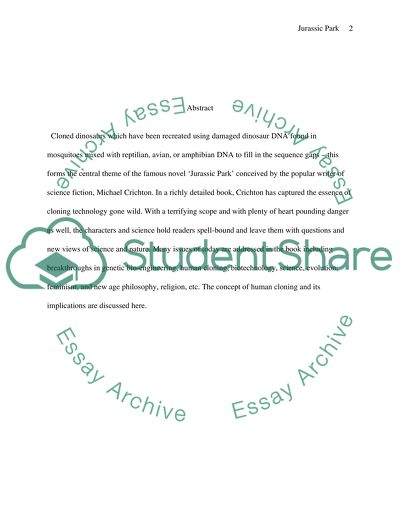Cite this document
(“Jurassic Park and Cloning Essay Example | Topics and Well Written Essays - 1500 words”, n.d.)
Retrieved from https://studentshare.org/literature/1516804-jurassic-park-and-cloning
Retrieved from https://studentshare.org/literature/1516804-jurassic-park-and-cloning
(Jurassic Park and Cloning Essay Example | Topics and Well Written Essays - 1500 Words)
https://studentshare.org/literature/1516804-jurassic-park-and-cloning.
https://studentshare.org/literature/1516804-jurassic-park-and-cloning.
“Jurassic Park and Cloning Essay Example | Topics and Well Written Essays - 1500 Words”, n.d. https://studentshare.org/literature/1516804-jurassic-park-and-cloning.


